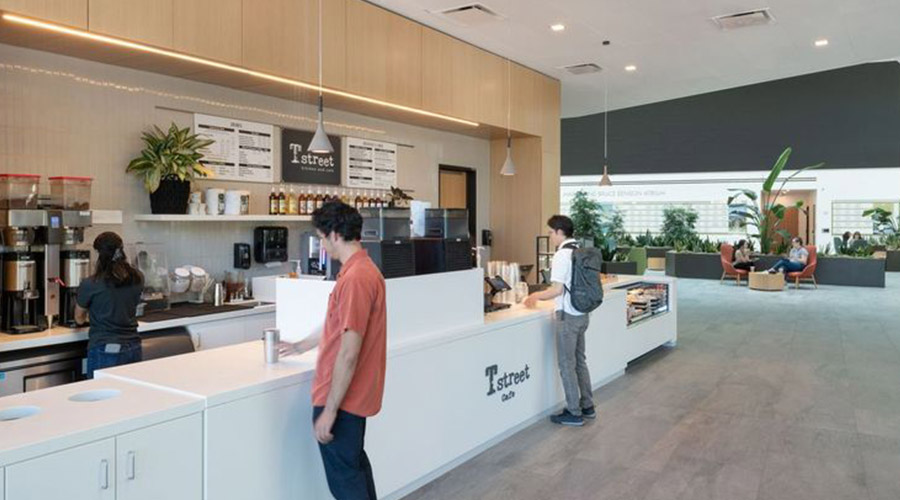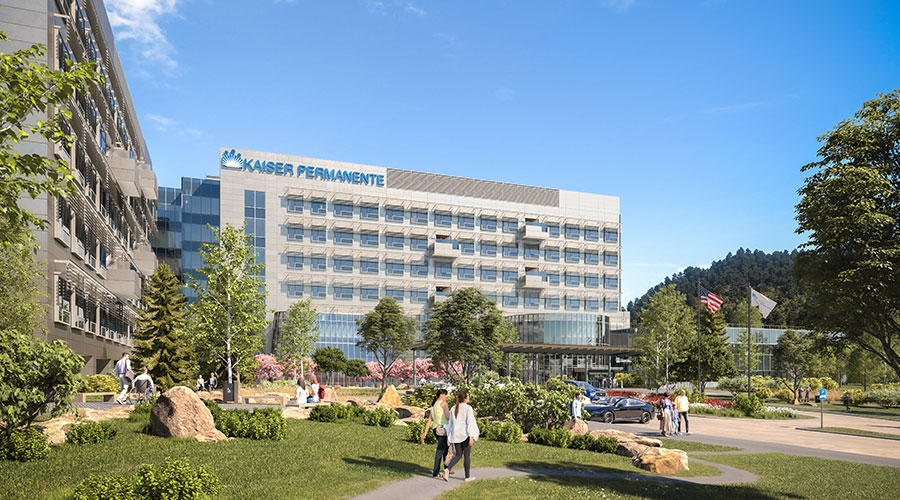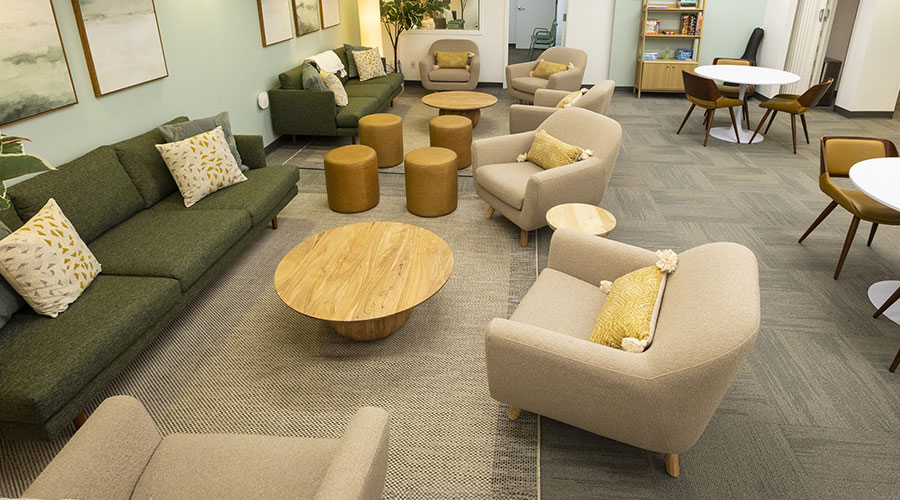No one expects amenities to be at the top of the facilities priority list, nor do they need to eat up a disproportionate amount of hospital dollars. But there are ways to turn amenities into assets, which is an opportunity no healthcare facilities manager should ignore.
Amenities in hospitals serve more than a functional purpose. They play a vital role in boosting employee satisfaction, morale and retention. The trick is to design amenities tailored to specific needs versus thinking a one-size-fits-all approach will suffice.
Healthcare workers, from caregivers to administrative staff, have diverse physical, practical and emotional needs that vary depending on personal preferences, workload and how stressful that day’s shift is. Once facility managers understand those issues, they can identify creative solutions using design, technology and partnerships.
Focus on relevance
Depending on a hospital’s population, meaningful amenities can range from a quirky coffee shop to concierge services to a gift shop that feels like a sleek convenience store.
Facility anagers should ask hospital staff what they care about. What would make their shift a little better? They also should talk to patient advocacy teams. What do they wish they could offer to family and visitors? Again, the answer is likely a mix of amenities and not just one.
Tangible examples also are helpful. There is a difference between a meeting space and a friendly place to have one-on-one conversations with residents. Similarly, asking for more snacks is different than wanting a healthy snack option within two minutes of a department.
By getting into specifics, managers can contextualize what they are hearing, and they can feel more confident in the solutions they generate.
Recognize nuances
As clinician burnout has increased in recent years, so have spaces like respite rooms. Yet not all respite needs are the same.
Some caregivers prefer total privacy, while others might want to relax with a favorite colleague in a comfortable setting. Cafes or lounges with quiet corners and multiple seating options can balance privacy and connection. For the person who needs daylight to feel alive again, that small courtyard might do the trick.
Meanwhile, if the organizational culture does not encourage employees to take mental or emotional breaks, then none of these spaces will be used to their full potential, which raises the question: What can hospitals do to ensure caregivers feel comfortable using the spaces available to them?
Related: What Amenities Do Healthcare Employees Want?
Another issue filled with nuance is neurodivergence and the sensory needs that go along with it. Research presented at the 2024 Healthcare Design Conference & Expo session, “Designing for Invisible Disabilities,” emphasized the importance of considering neurodivergent employees — those with such conditions as autism, ADHD, sensory processing disorders and social anxiety. The conference panel highlighted the way sensory-friendly design can greatly improve the experience of healthcare workers who are neurodivergent. With 15-20 percent of the global population displaying some form of neurodivergence, healthcare facilities managers need to recognize and accommodate the sensory needs of a significant portion of their workforce, as well as their patients and visitors.
Neurodivergent individuals, including clinicians, often struggle with heightened sensory stimulation, which can contribute to feelings of overload and stress. Giving people the ability to control lighting, sound and spatial arrangements can create a comfortable environment. Offering spaces away from the fray can help neurodivergent people effectively self-regulate and make hospitals more inclusive. Airports are adding sensory rooms for this reason.
Expand access with technology
When looking at food options, it can be hard to figure out ways to solve common problems, such as not having retail spaces open during the night shift and making sure everyone can take advantage of restaurants on campus when they have limited break time. These are perfect use cases for incorporating technology.
Could your gift shop also serve as a cashierless market, especially during off-hours? With additional security measures and a basic self-checkout setup, the space could become a viable overnight option for picking up snacks and necessities. In the case of making restaurants more accessible, managers should find strategic locations for smart fridges and food lockers. When in doubt, managers should look outside hospital walls to airports and retail spaces for ideas.
Expect more from operators
Third-party retailers also play a role in the hospital experience. What are they doing to accommodate employees who need to decompress? Are they making it as easy as possible to access their products and services? At minimum, the spaces they run should be clean and welcoming and provide expected conveniences, such as mobile ordering.
Retailers who really get it embrace the uniqueness of the environment they operate in – a place where hope and heaviness commingle and each person who steps foot in the door could use a bright spot in their day.
Amenities are a strategic tool for improving employee engagement, patient satisfaction and competitive differentiation. The key to achieving these goals lies in spaces that are functional, thoughtful and flexible enough to meet the diverse needs in the hospital environment.
Dan Kodner is the founder and CEO of HHP, a healthcare amenities company.

 Designing Healthcare Facilities for Pediatric and Geriatric Populations
Designing Healthcare Facilities for Pediatric and Geriatric Populations Kaiser Permanente Announces New Hospital Tower at Sunnyside Medical Center
Kaiser Permanente Announces New Hospital Tower at Sunnyside Medical Center Building Disaster Resilience Through Collaboration
Building Disaster Resilience Through Collaboration Amae Health Expands to New York City
Amae Health Expands to New York City Hospital for Special Surgery Opens Two New Facilities in New Jersey
Hospital for Special Surgery Opens Two New Facilities in New Jersey